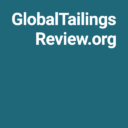
Towards Zero Harm: A compendium of papers
Alongside the Global Industry Standard on Tailings Management, the Chair of the Global Tailings Review has also published Towards Zero Harm: A Compendium of Papers prepared for the Global Tailings Review. Download the report:
The compendium performs two main functions:
1. It provides context to the Standard by informing readers about the reasons why the Global Tailings Review (GTR) was initiated, the process that was followed, and the considerations that guided the development of the Standard.
2. It goes beyond the Standard to review a wide range of issues related to the safe management of tailings facilities, for consideration by the different actors involved –including governments, investors, insurers, international organisations, educational institutions and industry professionals.
The production of this compendium was a collaborative effort with input from all of the Expert Panel, many of the Advisory Group members and other experienced professionals and researchers working in this area. As befits the breadth of the Standard, a broad cross-section of professional and academic disciplines is represented, including engineering, geology, environmental science, social sciences, risk management, law, public policy and finance.
The chapters are organised into different sections.
Section One comprises two context-setting chapters. The first chapter, which was authored by the Chair and the Secretariat staff, provides a brief history and overview of the GTR. The second provides an overview of key research findings and organisational learnings on the frequency, type, location and impact of tailings facility failures and the factors that contribute to these failings.
Section Two focuses on the social performance and human rights issues involved in designing and operating tailings facilities and managing the consequences of facility failures. Social performance is a cross-cutting theme that links to most of the topics covered in the Standard, but in particular to Topic I (Affected Communities) and Topic V (Emergency Response and Long-term Recovery). The first chapter in this section explains how and why social performance work is critical to tailings facility management, and describes the logic that underpins the inclusion and integration of social performance elements throughout the Standard. The second chapter presents lessons for the mining industry from international disaster research.
Section Three links to Topics II and III of the Standard (Integrated Knowledge Base and Design, Construction, Operation and Monitoring of the Tailings Facility). The chapters in this section address different aspects of tailings management, from design through to closure and include the findings from the first detailed analysis of the data provided by companies in response to the Church of England disclosure initiative. There is a strong focus on how outcomes can be enhanced through technological innovation and improved management and governance. Issues covered include: the benefits of taking a systems approach to tailings management; alternative technologies for storing and managing tailings; strategies for reducing the volume of tailings material generated; ensuring the safe closure of tailings facilities and their conversion to beneficial uses; and, dealing with tailings and other wastes associated with legacy mining sites.
Section Four links to the theme of building organisational capability, which is also the focus of Topic IV of the Standard (Management and Governance). The first chapter in this section focuses on how mining companies can strengthen their internal accountability and risk management processes. The second chapter addresses the challenge of building technical and governance capability and improving knowledge management in the mining industry and regulatory bodies.
Section Five, which links to both Topic IV and Topic V (Disclosure of Information), engages with broader questions about the governance framework within which mining is conducted. It comprises: (1) a chapter on the role of the State in ensuring the safe design and management of tailings facilities (including a discussion of how this role can be enhanced); (2) a comparative study of relevant regulatory frameworks in a range of mining jurisdictions; (3) a comparison of the Standard with other standards, codes and guidelines relating to tailings management; and (4) a chapter focused on the role that the insurance industry can play in driving improved practices in the mining sector and promoting uptake of the Standard.
Section Six provides a brief overview of three other initiatives that are aimed at contributing to improved tailings management practices in the mining sector. These are: the Investor Mining and Tailings Safety Initiative; the United Nations Environment Assembly (UNEA) Resolution on Mineral Resource Governance; and the proposed Global Research Consortium on Tailings.
Section Seven lays out the different options and the Chair’s recommendation for implementation of the Standard and the way ahead.
Alongside the Global Industry Standard on Tailings Management, the Chair of the Global Tailings Review has also published Towards Zero Harm: A Compendium of Papers prepared for the Global Tailings Review. Download the report:
You can also download individual chapters via the links below:
Setting the Scene
- Chapter I. Global Tailings Review at a Glance: History and Overview | B. Oberle, A. Mihaylova, A. Hackett
- Chapter II. Mine Tailings Facilities: Overview and Industry Trends | E. Baker, M. Davies, A. Fourie, G. Mudd, K. Thygesen
The Social Dimension
- Chapter III. Social Performance and Safe Tailings Management: A Critical Connection | D. Kemp, S. Joyce
- Chapter IV. Lessons for Mining from International Disaster Research | D. Kemp
Management of Tailings: Past, Present and Future
- Chapter V. Mine Tailings – A Systems Approach | A. Kupper, D. van Zyl, J. Thompson
- Chapter VI. The role of technology and innovation in improving tailings management | D. Williams
- Chapter VII. Lessons from Tailings Facility Data Disclosures | D. Franks, M. Stringer, E. Baker, R. Valenta, L. et al
- Chapter VIII. Closure and Reclamation | G. McKenna, D. van Zyl
- Chapter IX. Addressing Legacy Sites | K. Nash
Building Organisational Capacity
- Chapter X. Addressing the organisational weaknesses that contribute to disaster | A. Hopkins
- Chapter XI. Creating and Retaining Knowledge and Expertise | R. Evans, M. Davies
The Governance Dimension
- Chapter XII. The Role of the State | M. Squillace
- Chapter XIII. Comparative Analysis of Tailings- related Legislation in Key Mining Jurisdictions | White&Case LLP
- Chapter XIV. Summary of Existing Performance Standards for Tailings Management | C. Dumaresq
- Chapter XV. Insurability of Tailings Related Risk | G. Becker
Related Initiatives
- Chapter XVI. Investor Mining and Tailings Safety Initiative | S. Barrie, E. Baker, J. Howchin, A. Matthews
- Chapter XVII. United Nations Environment Assembly Resolution on Mineral Resource Governance
- Chapter XVIII. Global Research Consortium on Tailings | D. Franks, A. Littleboy, D. Williams
Pathways to Implementation



